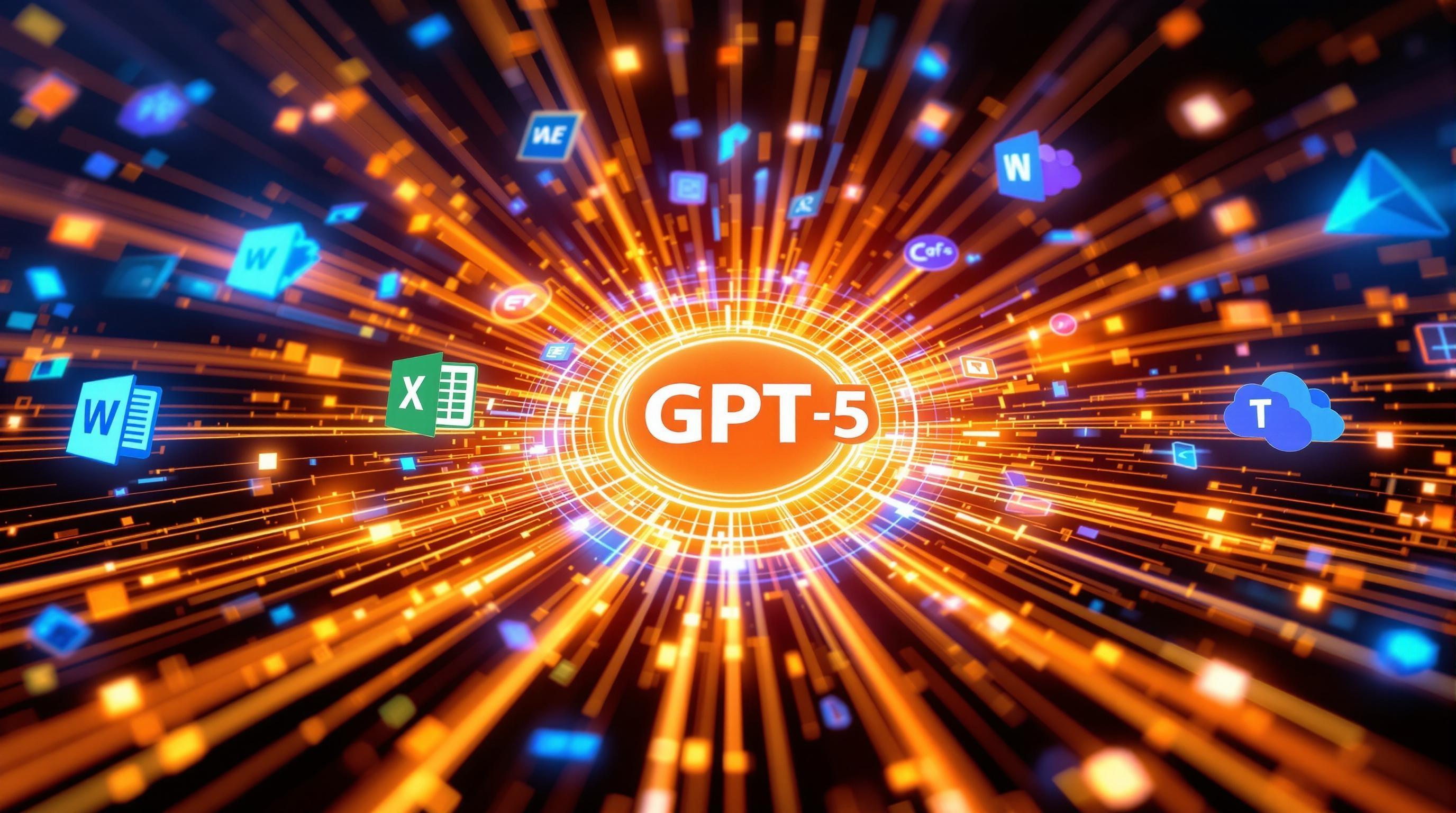Comparing Coding AI Tools: Find the Solution That Fits You Best

AI coding tools are revolutionizing software development by boosting efficiency and code quality, but finding the right fit requires a personalized approach. Discover how these AI assistants can help you focus on creative tasks and reduce errors, and start by analyzing your current coding habits to pinpoint your specific needs and pain points.
Introduction: Why Coding AI Tools Are Becoming Indispensable
The world of software development is undergoing a seismic shift, and at the heart of it all are AI coding tools. These aren't just fancy gadgets; they're rapidly evolving into indispensable partners for developers of all skill levels.
The AI Revolution in Code
The impact of AI on software development is multifaceted. From the mundane task of boilerplate code generation to the complex challenge of identifying elusive bugs, AI is making its mark. Imagine having a tireless assistant who can suggest code snippets, flag potential errors, and even optimize your algorithms for peak performance. That's the promise – and increasingly, the reality – of AI-powered coding.
Code Completion & Generation: Tools like GitHub Copilot, an AI pair programmer that suggests code and functions in real-time, are streamlining the coding process. Instead of writing every line from scratch, developers can leverage AI to fill in the gaps, accelerating development cycles and reducing the risk of typos or syntax errors.
Intelligent Debugging: AI can analyze code for potential bugs and vulnerabilities, providing suggestions for fixes. This proactive approach to debugging saves developers countless hours spent manually tracing errors, allowing them to focus on more creative and strategic aspects of their work.
Performance Optimization: AI algorithms can analyze code execution and identify areas for optimization, leading to faster and more efficient software. This is particularly valuable for performance-critical applications where every millisecond counts.

Finding the Perfect Fit: A Personalized Approach
With a growing number of AI coding tools available, the crucial question becomes: which one is right for you? The answer isn't always straightforward. What works wonders for a seasoned backend developer might be overkill for a front-end designer dabbling in JavaScript. Similarly, a large enterprise with stringent security requirements will have different needs than a solo developer building a mobile app.
Consider tools like Codeium, a free AI-powered code completion and search tool designed to help developers write code faster, or Blackbox AI, another tool using AI to accelerate coding. Each has strengths and weaknesses. Even ChatGPT, while not strictly a coding tool, can be used to generate and explain code snippets, debug, or even to translate code between different programming languages.
To navigate this complex landscape, it's essential to take a personalized approach. Understand your specific needs, evaluate the available options, and choose the AI coding tools that best align with your skills, workflow, and project requirements.
The goal isn't to replace developers with AI, but to empower them to become more efficient, productive, and creative.
As we delve deeper into the world of AI coding tools, we'll explore the leading solutions, compare their features, and offer practical guidance on how to choose the perfect fit for your unique needs. Let's begin by looking at the key considerations when evaluating these powerful AI assistants.
Defining Coding AI Tools
Imagine having a coding assistant that not only understands your code but also anticipates your next move, identifies bugs before they crash your program, and even writes tests for you – that's the power of coding AI tools.
What are Coding AI Tools?
At their core, coding AI tools are AI-driven applications designed to assist programmers in various aspects of the software development lifecycle. They leverage machine learning, natural language processing, and other AI techniques to automate repetitive tasks, improve code quality, and accelerate the development process. Think of them as a super-powered co-pilot for programmers, ready to assist at a moment's notice.
Types of AI Coding Tools
The world of coding AI tools is diverse and rapidly evolving. Here are a few key types:
Code Completion: These tools, like GitHub Copilot, learn from vast amounts of code to suggest code snippets, complete lines, and even entire functions as you type. It's like having an expert programmer whispering suggestions in your ear, significantly reducing typing and the chance of syntax errors.
AI Debuggers: Debugging can be a time-consuming and frustrating process. AI debuggers analyze code to identify potential errors, suggest fixes, and even predict runtime issues. They help developers spend less time hunting bugs and more time building features.
Test Script Generators: Writing tests is crucial for ensuring code quality, but it can also be tedious. AI-powered test script generators can automatically create test cases based on your code, helping you ensure that your application is robust and reliable. They're like tireless quality assurance engineers, working around the clock to keep your code in top shape.
Conversational Agents: Some AI coding tools take the form of conversational agents that can answer your coding questions, provide guidance, and even help you troubleshoot problems. It's like having a knowledgeable mentor available 24/7 to assist you with your coding challenges. These tools are especially helpful for developers learning new languages or frameworks.
Speeding up Development and Reducing Errors
The primary advantage of coding AI tools lies in their ability to speed up development and reduce errors. By automating repetitive tasks, suggesting code completions, and identifying potential bugs, these tools free up developers to focus on the more creative and strategic aspects of their work. This not only leads to faster development cycles but also results in higher-quality, more reliable software. These tools are like having an extra pair of hands (or maybe ten!), allowing developers to accomplish more in less time.
In essence, coding AI tools are transforming the software development landscape, and understanding their different types and capabilities is the first step in harnessing their power. Next, we'll delve into specific tools available in the market and compare their features.

Market Overview: A Comparison of Leading Coding AI Tools
The coding landscape is rapidly evolving, and at the forefront of this transformation are AI-powered tools designed to augment developers' capabilities. Let's explore some of the leading solutions that are reshaping how code is written, debugged, and maintained.
Diving into the Arena of AI Coding Assistants
These top AI coding tools are not just simple add-ons; they are sophisticated platforms that leverage machine learning to understand context, predict code, and even suggest architectural improvements. The rise of AI in coding signifies a shift towards more efficient, less error-prone development cycles. A comprehensive top AI coding tools comparison reveals that each tool offers unique strengths, catering to diverse needs and preferences.
GitHub Copilot: The Contextual Code Alchemist
GitHub Copilot stands out with its remarkable ability to provide contextual code completion across a multitude of programming languages. Think of it as having an experienced pair programmer constantly suggesting the next line of code, tailored to the project's specific requirements and coding style.
Language Support: Extensive, covering popular languages like Python, JavaScript, TypeScript, Go, and more.
Context Awareness: Analyzes the surrounding code, comments, and project structure to provide relevant suggestions.
Learning Capability: Continuously learns from your coding patterns to improve suggestion accuracy over time.
GitHub Copilot is particularly useful for speeding up development and reducing boilerplate code, making it an invaluable asset for both solo developers and large teams.
Amazon CodeWhisperer: AWS Integration and Security Fortification
For those deeply embedded in the Amazon Web Services (AWS) ecosystem, Amazon CodeWhisperer offers seamless integration and a strong emphasis on security. It's designed to understand AWS services and provide code recommendations that align with best practices for cloud development. This coding AI tool specializes in AWS and provides real-time code suggestions within the AWS environment.
AWS Service Integration: Directly integrates with AWS services like Lambda, EC2, and S3.
Security Checks: Performs real-time security scans to identify potential vulnerabilities in your code.
Policy Compliance: Helps ensure code adheres to company-specific security policies and industry standards.
Tabnine: Privacy-Focused and Versatile
Tabnine distinguishes itself with a strong focus on privacy, ensuring that your code remains confidential. It supports a wide array of Integrated Development Environments (IDEs) and languages, making it a versatile choice for diverse development environments.
Privacy Commitment: Offers options for on-premises deployment to keep code within your infrastructure.
IDE Support: Compatible with popular IDEs like VS Code, IntelliJ, and Eclipse.
Language Breadth: Supports numerous languages, including Python, Java, C++, and more.
OpenAI ChatGPT Plugins: Conversational Problem-Solving
While not strictly a coding tool, ChatGPT with its plugins provides a flexible interface for solving coding problems. You can describe a problem in natural language, and the AI can generate code snippets, debug existing code, or explain complex concepts. It's a powerful tool for exploring solutions and learning new techniques.
Natural Language Interface: Interact with the AI using conversational language.
Code Generation: Generates code snippets based on your descriptions.
Debugging Assistance: Helps identify and fix errors in your code.
Here’s a quick comparison:
Feature | GitHub Copilot | Amazon CodeWhisperer | Tabnine | ChatGPT Plugins |
|---|---|---|---|---|
Code Completion | Contextual | Contextual, AWS-focused | Contextual, Privacy-focused | Generative |
Language Support | Wide | Wide | Wide | Wide |
IDE Support | Many | Limited | Many | Web-based |
Security | Basic checks | Advanced security checks, AWS integration | Privacy-focused options | Limited |
As AI continues to permeate the development world, selecting the right tool becomes crucial. Each of these top AI coding tools offers unique advantages, and the best choice depends on your specific needs, environment, and coding style. You can stay up-to-date with the latest AI News on our dedicated page to learn about the newest advancements in this rapidly evolving field. The next section will dive deeper into use cases that show the strengths of these tools in real-world coding scenarios.

Detailed Comparison Criteria
Choosing the right AI coding tool is like picking the perfect set of wrenches for a mechanic – it all depends on the job at hand, the tools you already have, and your personal preferences. To make an informed decision, let's dive into the key criteria for choosing AI coding tools that can truly make a difference in your development workflow.
Functionality and Features: The Breadth of Assistance
The core of any AI coding tool lies in its functionality. These features can significantly boost your productivity and code quality:
Code Completion: This is the most basic and widely used feature. It suggests code snippets as you type, reducing boilerplate and minimizing typos. Think of it as having an extremely helpful pair programmer who knows all the common patterns and APIs. GitHub Copilot, for example, excels in this area, providing context-aware suggestions based on your project's codebase.
Error Detection: Catching bugs early is crucial. AI can analyze your code in real-time to identify potential errors, from syntax mistakes to more complex logical flaws. Imagine having a tireless proofreader for your code.
Refactoring: Improving code structure without changing its functionality is essential for maintainability. AI tools can automate refactoring tasks like renaming variables, extracting methods, and simplifying complex expressions. It's like having a skilled architect help you redesign your code for optimal performance.
Automated Testing: Writing tests is often seen as a chore, but it's vital for ensuring code reliability. Some AI tools can generate test cases based on your code, saving you time and effort. This is similar to having a QA team built into your IDE.
It's important to evaluate which features are most critical for your specific needs. Do you primarily need help with code completion, or are you more interested in automated testing and refactoring?
Integration & Compatibility: Seamless Workflow
An AI coding tool is only useful if it integrates smoothly with your existing development environment. Consider these factors:
IDE Support: Does the tool support your preferred Integrated Development Environment (IDE)? Popular IDEs like Visual Studio Code, IntelliJ IDEA, and Eclipse should have plugins or extensions available. For instance, Codeium is designed to work seamlessly with various IDEs, offering a consistent experience across different platforms.
Language Compatibility: Does the tool support the programming languages you use? Ensure the tool is trained on the languages you work with most frequently, whether it's Python, JavaScript, Java, or others.
Platform Compatibility: Is the AI coding tool compatible with your operating system (Windows, macOS, Linux)?
Feature | Description |
|---|---|
IDE Support | Compatibility with popular IDEs like VS Code, IntelliJ, and Eclipse. |
Language Support | Support for the programming languages you use (e.g., Python, JavaScript). |
Platform Compatibility | Compatibility with your operating system (Windows, macOS, Linux). |
User Experience: Ease of Use and Support
Even the most powerful AI tool is useless if it's difficult to use. Consider these user experience aspects:
Ease of Use: Is the tool intuitive and easy to learn? A well-designed interface and clear workflows are essential.
Documentation: Is there comprehensive documentation available? Good documentation can help you quickly understand the tool's features and troubleshoot any issues. This can include tutorials and FAQs.
Community Support: Is there an active community of users? A strong community can provide valuable support, share tips and tricks, and help you solve problems.
Data Privacy & Security: Protecting Your Code
When using AI coding tools, it's crucial to consider the security and privacy of your code. These tools often analyze your code to provide suggestions and identify errors, so it's essential to understand how they handle your data:
Data Handling Policies: Read the tool's privacy policy to understand how your code is used and stored. Ensure the tool has robust security measures in place to protect your data from unauthorized access.
Confidentiality: If you're working on sensitive or proprietary code, choose a tool that offers confidentiality agreements or on-premise deployment options.
Compliance: Ensure the tool complies with relevant data privacy regulations, such as GDPR or CCPA.
Cost Model: Balancing Value and Budget
AI coding tools come in various pricing models, ranging from free to subscription-based. Understand what you're paying for and whether it aligns with your budget:
Free Tiers: Many tools offer free tiers with limited features. These can be a good way to try out a tool before committing to a paid subscription.
Subscription Models: Paid subscriptions typically offer more features, higher usage limits, and better support. Compare the pricing plans of different tools to find the best value for your needs. JetBrains, for example, offers a suite of tools for software development.
Usage-Based Pricing: Some tools charge based on usage, such as the number of code suggestions or the amount of code analyzed. This can be a good option if you only need the tool occasionally.
By carefully evaluating these criteria, you can choose an AI coding tool that perfectly complements your skills and helps you achieve your development goals. Ultimately, the best tool is the one that makes you a more efficient, productive, and confident coder. Now that we've explored the selection criteria, let's delve into some of the leading AI coding tools available today.
Use Cases and Practical Recommendations: Which Tool for Which Purpose?
Ready to ditch the coding grind and supercharge your development? Let's break down how to pinpoint the perfect AI coding companion for your specific needs.
Decoding Your Coding DNA: Analyze Your Workflow
Before diving headfirst into the AI pool, take a good, hard look at your current coding habits. What are your biggest pain points? Where do you spend most of your time? Identifying these areas will help you narrow down your options and select an AI tool that truly complements your workflow.
Consider these questions:
What languages do you primarily use? (Python, JavaScript, Java, etc.)
What types of projects do you typically work on? (Web development, data science, mobile apps, etc.)
What are your biggest coding challenges? (Debugging, writing boilerplate code, understanding legacy code, etc.)
What tools do you already use and love? (IDE, text editor, version control system, etc.)
Understanding your needs will make it easier to pinpoint an AI tool that offers real, tangible improvements.
Trial by Code: Test, Test, and Test Again
Reading reviews and watching demos can only take you so far. The real magic happens when you get your hands dirty and test these AI tools on your own projects. Take advantage of free trials or community editions to experiment with different options. Throw your most challenging coding problems at them and see how they perform.
Treat this phase like a coding bake-off! See which tool can rise to the occasion and deliver the best results.
During your testing phase:
Start with small, manageable tasks: Don't try to rewrite your entire codebase on day one. Begin with smaller tasks, such as generating unit tests or refactoring a specific function.
Experiment with different prompts: The quality of the output depends heavily on the quality of the input. Try different prompts and see how the AI tool responds. Learn how to phrase your requests to get the best results. Consider taking a course in Prompt Engineering.
Monitor performance and accuracy: Keep a close eye on the AI tool's performance and accuracy. Does it consistently generate correct and efficient code? Does it introduce new bugs or vulnerabilities?
Evaluate the user experience: Is the AI tool easy to use and integrate into your existing workflow? Is the documentation clear and helpful? Is the support team responsive and knowledgeable?
Weighing the Scales: Pros, Cons, and Cold Hard Truths
Once you've put a few AI tools through their paces, it's time to weigh the pros and cons. Don't just focus on the flashy features. Consider the practical implications of using each tool in your day-to-day workflow. Create a simple table to compare your options side-by-side.
Feature | Tool A | Tool B | Tool C | |
|---|---|---|---|---|
Code Completion | Excellent for Python, good for JavaScript | Good for Python, excellent for Java | Average for all languages | |
Code Generation | Generates verbose but correct code | Generates concise but sometimes buggy code | Generates well-documented code | |
Debugging Support | Excellent, integrates with popular debuggers | Limited debugging support | Basic debugging features only |
Consider these criteria:
Accuracy: How often does the AI tool generate correct and functional code?
Efficiency: How efficient is the code generated by the AI tool? Does it introduce performance bottlenecks?
Usability: How easy is the AI tool to use and integrate into your existing workflow?
Customization: How customizable is the AI tool? Can you tailor it to your specific needs and preferences?
Security: How secure is the AI tool? Does it protect your code and data from unauthorized access?
Show Me the Money (and Keep It Safe): Budget and Security
Of course, no decision is complete without considering the financial implications. AI coding tools range from free, open-source options to expensive, enterprise-grade solutions. Determine your budget and find a tool that offers the best value for your money. If you are looking for Open Source tools, take a look at Hugging Face which offers a wide array of open-source AI tools and models.
But beyond cost, data security is paramount. Before integrating any AI tool into your workflow, carefully review its data security policies. Where is your code stored? How is it protected? Who has access to it? Make sure the AI tool meets your organization's security requirements and complies with relevant regulations.
Remember, the cheapest tool is not always the best tool. Prioritize security and compliance, even if it means paying a bit more.
By meticulously analyzing your workflow, rigorously testing AI tools, carefully weighing the pros and cons, and accounting for budget and security constraints, you can confidently select the right AI coding tool. This will unlock new levels of productivity and innovation in your development process. Check out our list of the Top 100 AI tools to start your search! Let's move on to practical examples of how these tools can be used in real-world scenarios.
Conclusion and Final Recommendations
Ultimately, the quest to find the perfect AI coding tool isn't about discovering a mythical, one-size-fits-all solution. It's a deeply personal journey of exploration and adaptation.
The Power of Personalized Evaluation
The best way to determine which AI coding tool truly fits your needs is through rigorous, personalized testing.
Don't just take our word for it, or blindly follow the recommendations of others. Instead, identify your specific coding challenges, preferred workflows, and technological environment. Then, armed with this knowledge, experiment with various tools like GitHub Copilot, an AI pair programmer that offers real-time code suggestions, or Codeium, another AI-powered coding assistant that focuses on code completion and search, to see which ones genuinely streamline your process and boost your productivity.
Consider these key aspects during your evaluation:
Integration: How well does the tool integrate with your existing IDE and workflow?
Accuracy: How accurate and relevant are the code suggestions or generated code snippets?
Learning Curve: How steep is the learning curve? Can you quickly become proficient in using the tool?
Cost: Does the pricing model align with your budget and usage patterns?
Support: What kind of support is available if you encounter issues or need assistance?
By carefully considering these factors, you can make a more informed decision and select the AI coding tool that best suits your unique requirements.
Embracing Constant Evolution in the AI Landscape
The world of AI is in constant flux, and AI coding tools are no exception. New features, models, and even entirely new tools are emerging at an astonishing rate. What works best today might be superseded by a more efficient or powerful alternative tomorrow. This dynamic nature necessitates a commitment to ongoing reassessment.
Consider these points:
Stay Informed: Keep abreast of the latest developments in the field by subscribing to industry newsletters, following AI blogs (like our AI News section), and participating in online communities.
Experiment Regularly: Dedicate time to periodically re-evaluate your current toolset and experiment with new offerings.
Adapt Continuously: Be prepared to adjust your workflows and embrace new tools as they emerge, ensuring you remain at the forefront of coding efficiency.
Sustained Efficiency and Innovation: The Long-Term View
Ultimately, the goal of incorporating AI coding tools is to achieve sustained developer efficiency and foster innovation. This requires a commitment to continuous review and adaptation. By regularly reassessing your toolset and embracing new technologies, you can:
Maximize Productivity: Streamline your coding workflows, reduce repetitive tasks, and free up time for more creative and strategic endeavors.
Enhance Code Quality: Leverage AI-powered tools to identify potential errors, improve code readability, and enforce coding standards.
Accelerate Innovation: Explore new coding paradigms, experiment with cutting-edge technologies, and push the boundaries of what's possible.
By making continuous review a core tenet of your coding practice, you'll not only stay ahead of the curve but also unlock new levels of efficiency and innovation. This proactive approach is essential for thriving in the ever-evolving landscape of the future of AI coding tools.

Keywords: Coding AI tools, AI coding assistants, Software development AI, GitHub Copilot, Amazon CodeWhisperer, Tabnine, ChatGPT Plugins, AI code completion, AI debugging tools, Automated testing tools, IDE integration, Code refactoring AI, Data privacy in AI coding, AI coding cost, Best AI coding tools
Hashtags: #CodingAI #AItools #SoftwareDevelopment #AICodingAssistant #DeveloperProductivity
For more AI insights and tool reviews, visit our website https://best-ai-tools.org, and follow us on our social media channels!
Website: https://best-ai-tools.org
X (Twitter): https://x.com/bitautor36935
Instagram: https://www.instagram.com/bestaitoolsorg
Telegram: https://t.me/BestAIToolsCommunity
Medium: https://medium.com/@bitautor.de
Spotify: https://creators.spotify.com/pod/profile/bestaitools
Facebook: https://www.facebook.com/profile.php?id=61577063078524
YouTube: https://www.youtube.com/@BitAutor
Recommended AI tools
ChatGPT
Conversational AI
AI research, productivity, and conversation—smarter thinking, deeper insights.
Google Gemini
Conversational AI
Your everyday Google AI assistant for creativity, research, and productivity
DeepSeek
Code Assistance
Efficient open-weight AI models for advanced reasoning and research
n8n
Productivity & Collaboration
Open-source workflow automation with native AI
Windsurf (ex Codium)
Code Assistance
Tomorrow’s editor, today. The first agent-powered IDE built for developer flow.
Grok
Conversational AI
Your cosmic AI guide for real-time discovery and creation


